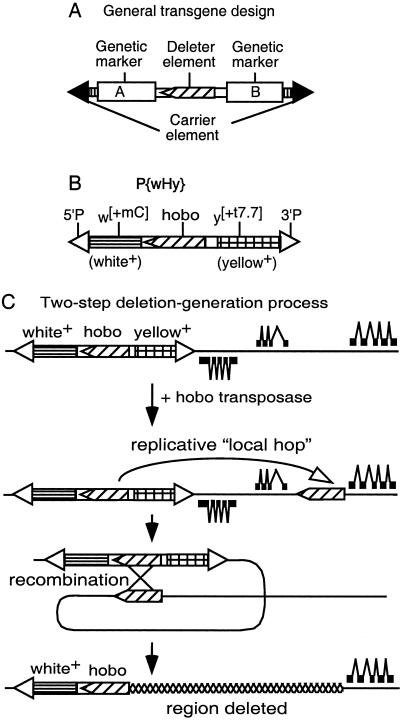Figure 1.
The hybrid transposon P{wHy} and its use for generating unidirectional deletions. (A) Scheme for a general compound mobile element containing two markers and a deleter inserted into a carrier element. (B) P{wHy} consists of P5′-w[+mC]-hobo-y[+t7.7]-P3′ (hobo, oriented 5′ to 3′, and the flanking white and yellow markers reside within P element ends). (C) General scheme for P{wHy}-generated unidirectional deletions. A single P{wHy} insertion is adjacent to genes transcribed from both strands of DNA (thick line). After local hobo hopping followed by intrachromosomal recombination between the directly oriented hobo elements, one marker (in this case yellow) along with two proximal genes is excised. The deletion is selected on the basis of the expression of the remaining marker. If the orientation of the second hobo were reversed, an inversion would occur (10).

